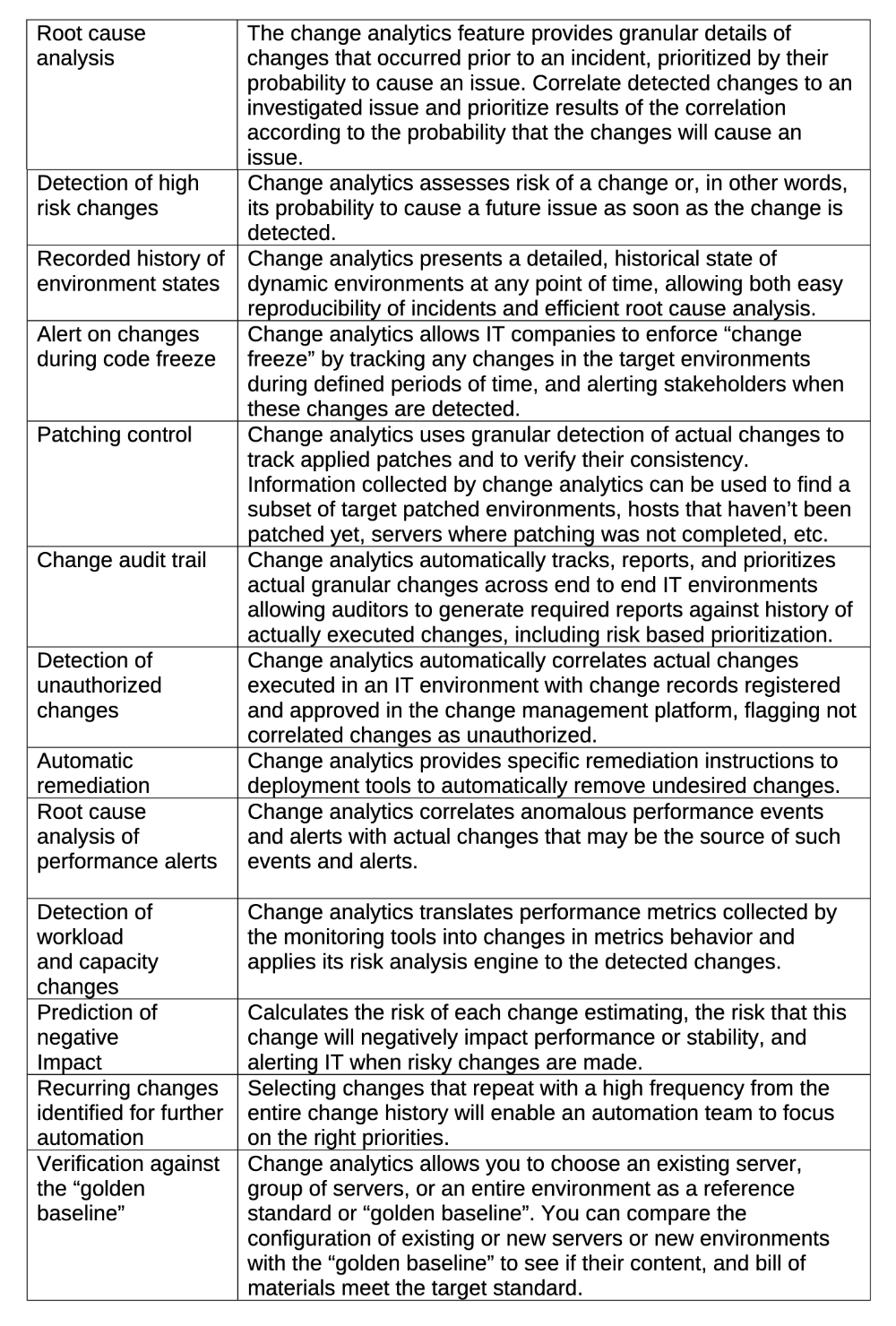Traditional ITIL-based method of change management is no longer effective. The rapid expansion of application and infrastructure is making manual change management increasingly stressful. Maintaining change records of every object of configuration items is challenging.
In a complex IT environment, it is usual to keep manual documentation of planned and approved changes at a very high level. A complete list of the bits and bytes that will be changed is not feasible. Due to the interdependencies between applications, even a minor change can affect the entire business process. Cloud-based changes are even more rapid and difficult to manage round the clock, and around the globe.
The current approach: Incident management after change execution
Gartner estimates that 85% of performance and availability incidents are the result of change. The incident management process, mostly, starts as soon as the incident is recorded in the information technology service management (ITSM) tool. Technical support teams begin troubleshooting and use logs, performance metrics, and application traces to try and restore service as soon as possible.
The support team faces tremendous pressure to restore business service as quickly as possible. The typical approach is to restart the service, restore the last known good configuration, spin a new cloud instance, etc., thus creating a lot of panic, pressure, and business loss. While this approach may restore the business service, it takes considerable time and expertise to root out the problem.
If the root cause of the problem is not identified quickly, one is only treating its symptoms. Also, the issue will eventually recur unless a permanent solution is determined and implemented.
What is the challenge?
The key question is — “what, when, where, who, and why changed?” Tracking and tracing each change at the granular level is difficult. There is no practical way for companies to keep track of all unauthorized changes, which keep unfolding behind the scenes. Every second, thousands of IT specialists modify the system.
Manual documentation of planned and approved changes is kept at a very high level since it is not feasible to list every bit and byte that will be changed.
What if a machine could track all object changes based on both the previous and modified attributes? This would enable IT specialists to view which specific configuration parameters were modified, which files updated, and which attributes of the database schema object altered.
AI for tracking and analyzing changes
Currently, only a few artificial intelligence for IT operations (AIOps) tools provide root cause analysis. Most tools are useful only for pinpointing the problem or partially finding the cause, but a human touch is essential.
With Wipro business service management (BSM), customers have access to state-of-the-art change analytics solution. AI-based prediction is used to detect risky changes and outages, as well as identify the root cause of incidents.
Change analytics offers one of the best ways to leverage artificial intelligence and machine learning (ML) capabilities, and is your in-house AI-based auditor that keeps track of granular changes. Based on 10 years of research and development, this product comes with many prebuilt algorithms that detect unauthorized changes with risk measures attached.
With change analytics, you will experience less incidents, avoid outages, speed up mean time to recovery or mean time to restore (MTTR), and improve productivity.
Figure 1 includes a number of key practical applications of Wipro’s change analytics solution.

Figure 1: Wipro’s BSM AIOps solution — Key practical applications
The future of change analytics
Change analytics will redefine the IT Operations space. Breaking data silos is important to get insights and draw intelligent correlations. Knowing what actually changed in your environment reveals powerful insights for delivering and operating critical business applications. To reduce root cause turnaround time from weeks to hours AI based analytic approach is the demand of every business. To reduce IT pain points Wipro change analytics is the solution.
Wipro’s BSM AIOps will deliver immense value to your business. For more details, connect with us.
BSM practice team
Co Author:Sachin Gujar, Senior Architect, Wipro Ltd.
Sachin Gujar is a Senior Solution Architect with Wipro’s Business Service Management and AIOps tools practice team. He has over 18 years of experience in enterprise end-to-end infrastructure monitoring solutions, tools architecture solution designing, transformation, transitions, and automation. His core vertical clients include financial services, manufacturing, hi-tech, retail, healthcare and services, and energy and utilities.